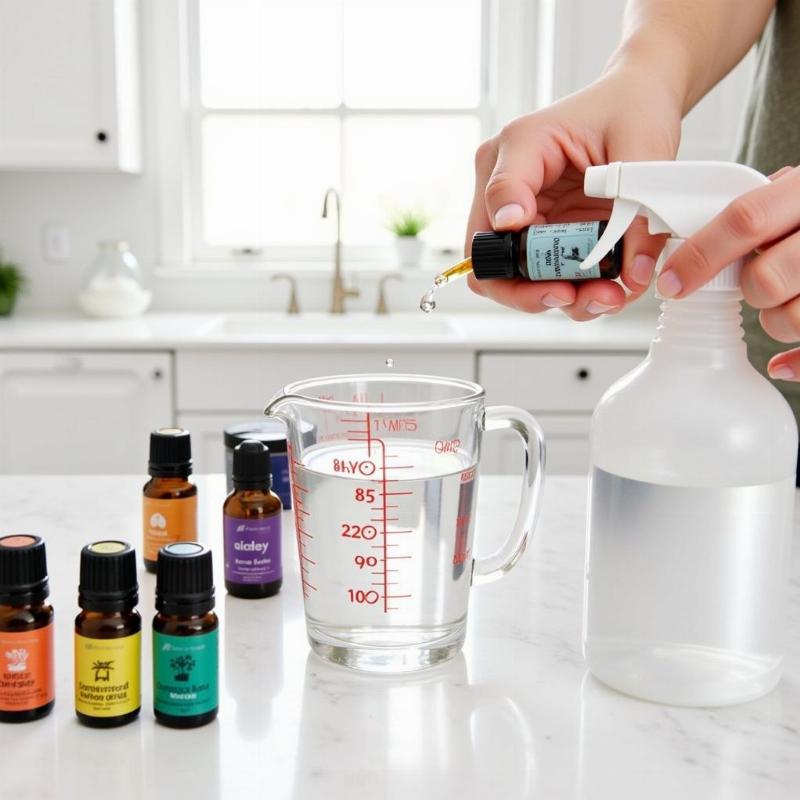Finding an effective yet safe insect repellent for your dog can be a challenge. Many commercial products contain harsh chemicals that can be harmful to your pet’s health. That’s why all natural dog insect repellent is becoming increasingly popular among pet owners in the US. These products utilize natural ingredients to deter pests, providing peace of mind knowing you’re protecting your furry friend without exposing them to potentially harmful chemicals. But with so many options on the market, how do you choose the best one?
Understanding the Need for All Natural Dog Insect Repellent
Insects like mosquitoes, fleas, and ticks can transmit diseases to your dog, making protection crucial, especially during warmer months. Heartworm disease, Lyme disease, and ehrlichiosis are just a few of the serious illnesses these pests can carry. While conventional repellents often contain DEET or permethrin, known to be toxic to dogs in certain concentrations, all natural alternatives offer a safer approach. These products typically use essential oils and botanical extracts to create a scent barrier that insects find unpleasant.
Choosing the Right All Natural Dog Insect Repellent for Your Canine Companion
With a variety of all natural dog insect repellent options available, it’s essential to select the best one for your dog’s specific needs. Consider the following factors:
- Ingredients: Look for repellents containing essential oils like citronella, lemongrass, cedarwood, or peppermint, known for their insect-repelling properties. Avoid products with artificial fragrances or dyes.
- Dog’s Size and Age: Puppies and smaller dogs may require a formula specifically designed for their sensitive skin.
- Application Method: Choose between sprays, wipes, collars, or topical solutions based on your preference and your dog’s lifestyle. Sprays offer targeted application, while collars provide continuous protection.
- Specific Pests: Some repellents are more effective against certain types of insects. Identify the pests prevalent in your area and choose a product accordingly.
DIY All Natural Dog Insect Repellent Recipes
If you’re feeling crafty, you can even create your own all natural dog insect repellent at home. Here’s a simple recipe:
- Combine one cup of distilled water with 20-30 drops of your chosen essential oils (citronella, lemongrass, and cedarwood are popular choices).
- Pour the mixture into a spray bottle and shake well before each use.
- Spray lightly on your dog’s fur, avoiding the eyes and mouth.
 Mixing ingredients for a DIY all natural dog insect repellent
Mixing ingredients for a DIY all natural dog insect repellent
Remember to always test a small area of your dog’s skin before applying any new repellent, even all natural ones, to check for any allergic reactions.
Protecting Your Home and Yard Naturally
Besides using all natural dog insect repellent directly on your dog, consider these additional measures to create a pest-free environment:
- Regular Grooming: Frequent brushing and bathing can help remove fleas and ticks.
- Yard Maintenance: Keep your grass short and remove any standing water where mosquitoes breed.
- Natural Pest Control for Your Home: Consider using natural pest control methods in your home, such as diatomaceous earth, to further reduce insect populations.
Conclusion: Choosing All Natural Dog Insect Repellent for a Happier, Healthier Pup
Using all natural dog insect repellent provides a safe and effective way to protect your beloved companion from disease-carrying pests. By carefully selecting the right product and taking additional preventative measures, you can ensure your dog enjoys a happy, healthy, and pest-free life. Remember to consult your veterinarian if you have any concerns about your dog’s health or if you notice any unusual reactions to an insect repellent.
FAQ:
- Are all natural dog insect repellents as effective as chemical repellents? While all natural repellents may not be as potent as chemical options, they offer a safer alternative and can be highly effective when used consistently and combined with other preventative measures.
- How often should I apply all natural dog insect repellent? The frequency of application depends on the specific product and the level of pest infestation in your area. Follow the manufacturer’s instructions for the best results.
- Can I use human insect repellent on my dog? Never use human insect repellent on your dog, as many contain DEET, which is toxic to dogs. Always choose a product specifically formulated for canine use.
- What should I do if my dog ingests all natural dog insect repellent? Contact your veterinarian immediately if your dog ingests any insect repellent, even if it’s all natural.
- Where can I buy all natural dog insect repellent? You can find all natural dog insect repellent at pet stores, online retailers, and some veterinary clinics.
- Are there any side effects of using all natural dog insect repellent? While generally safe, some dogs may experience mild skin irritation or allergic reactions to certain essential oils. Always test a small area of your dog’s skin before applying a new product.
- Can I make my own all natural dog insect repellent? Yes, you can create your own repellent using essential oils and water. However, research safe essential oils for dogs and use them in appropriate dilutions.
Beautdogs.us is your trusted source for comprehensive and engaging information on dog care and companionship in the US. We offer expert advice on dog breeds, grooming, nutrition, training, and much more. Whether you’re a new dog owner or a seasoned pro, Beautdogs.us is here to help you navigate the wonderful world of dog ownership. Contact us today for personalized guidance: Email: [email protected], Phone: +1 501-555-7529.